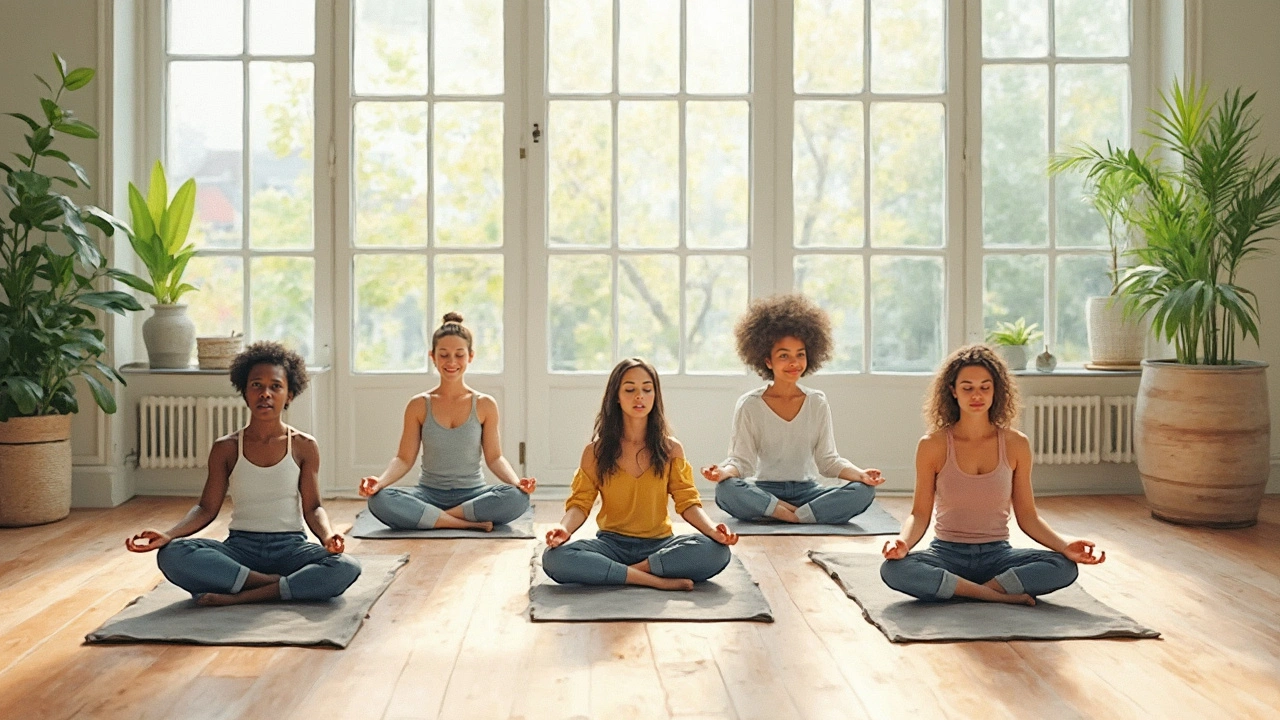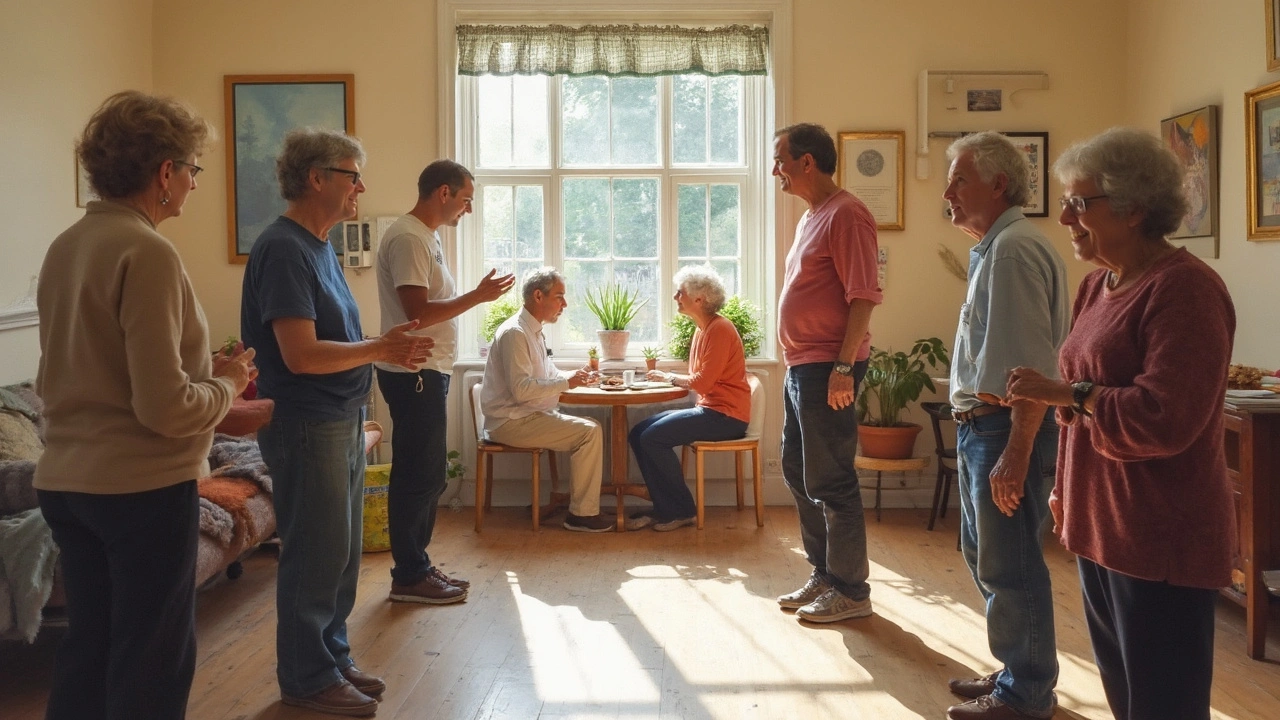Feldenkrais Training: Your Path to Self-Discovery and Body Awareness
 May, 6 2025
May, 6 2025
There’s something oddly satisfying about realizing you move better than you thought you could. Feldenkrais training isn’t yoga, it’s not Pilates, and you won’t find yourself doing the splits or handstands. Instead, it’s this low-key, almost sneaky way of getting to know how you move—like catching yourself slouching or tensing your jaw when you’re stressed—then actually doing something about it.
Instead of pushing for perfect posture, Feldenkrais gently teaches you how to notice small differences in the way you sit, stand, or even breathe. You won’t need fancy gear or loads of space. If you’ve ever thought, “Why does my back hurt every time I garden or work at my computer?”—this method’s for you. It’s about tuning in and unlearning old habits that hold you back without even realizing it.
- What Is Feldenkrais Training Really About?
- Everyday Benefits People Actually Notice
- How Classes Work and What to Expect
- Tips for Getting the Most Out of Feldenkrais
What Is Feldenkrais Training Really About?
Feldenkrais training is all about learning to move with more awareness. Developed by Dr. Moshe Feldenkrais, a Ukrainian-Israeli scientist and judo expert, this method flips the script on traditional exercise. Instead of aiming for muscle or cardio gains, you focus on noticing how your body actually works in real life. It’s kind of like gaining a new user manual for yourself.
This approach relies on slow, gentle movements. Most of the time, you’re either lying on the floor or sitting comfortably. There’s none of that “no pain, no gain” stuff here. The whole idea is to reduce effort and tune into your natural patterns. You start asking questions like, "Am I clenching my jaw when I lift my arm? Why does my back tense up when I reach for something?"
There are two main ways to experience Feldenkrais:
- Awareness Through Movement (ATM) classes: These are usually done in groups, following a teacher’s simple instructions. You explore easy movements, sometimes unusual ones, which help you pay attention to what you feel.
- Functional Integration (FI) sessions: These are one-on-one, with a practitioner guiding you through movements—usually hands-on. It’s personalized, based on what you need.
The real point? You discover how to move more efficiently and comfortably, breaking those annoying habits that lead to pain or stiffness. Instead of powering through pain, you learn to listen and adjust. It’s backed by neuroscience, too. Brain imaging studies have shown that feldenkrais training can actually change the brain’s movement maps, making it easier to access new patterns and let go of old ones.
Here’s a quick look at what people typically work on in a Feldenkrais session:
| Common Focus Areas | Examples |
|---|---|
| Relieving chronic pain | Back, neck, jaw tension |
| Improving movement | Walking smarter, better balance |
| Reducing stress | Breathing, letting go of unnecessary effort |
| Boosting performance | Athletes, musicians, dancers refining skills |
So, feldenkrais training is your chance to wake up old habits, question the way you move, and try out easier ways of doing everyday things. No fancy equipment, no strict rules—just a willingness to be curious and notice what’s really happening in your body.
Everyday Benefits People Actually Notice
The biggest surprise with feldenkrais isn’t some mystical experience—it’s how these tiny changes in movement show up in everyday life. People don’t usually walk out of a session doing backflips, but there are real, day-to-day perks that keep folks coming back.
First off, pain relief gets mentioned a lot. If you’re used to stiff shoulders or a sore low back from sitting all day, Feldenkrais gives you practical tools to notice why it’s happening and how to fix it. Lots of office workers I know have found they fidget less, slump less, and even sleep better when they start paying attention to their habits.
Another biggie is better coordination. Moves you took for granted—like bending to tie your shoes, getting up from a chair, or going for a walk—start to feel easier. I’ve seen friends who struggled with clumsiness become noticeably steadier on their feet after sticking with feldenkrais training for a while.
- Easier movement—daily tasks no longer feel awkward or stiff.
- More awareness of your body’s signals, so you actually know when to take breaks before soreness sets in.
- Quicker recovery after minor accidents or strains (like turning your ankle or sleeping weird on your neck).
- Less clenching—people often notice fewer headaches and less jaw tension.
- Calmer mind—because tuning into your movements gives your brain a break from worry.
Here’s something cool: a 2022 review in the journal "Complementary Therapies in Clinical Practice" found consistent improvements in posture and balance among older adults after feldenkrais sessions. These aren’t just feel-good stories—they measured fewer falls, better steadiness, and even quicker reaction times.
Honestly, the little wins add up. One of my favorite things was realizing my dog walks with my staffy Diesel got less tiring because I wasn’t tensing up my shoulders holding his leash. Minnie, my Siamese cat, has even gotten a gentler cuddle since my wrists don’t ache as much now. It’s all about noticing, tweaking, and celebrating how much more comfortable daily life can get.

How Classes Work and What to Expect
Walking into a feldenkrais class, you might see people lying on mats, moving slowly, or just exploring weirdly simple movements. That’s normal. Classes can be group-based, often called Awareness Through Movement lessons, or individual one-on-one sessions that practitioners call Functional Integration. Either way, forget about sweating or pushing through pain. The whole thing is about exploring movement in a way that feels doable and safe.
In group classes, the instructor guides you using voice cues. You’ll try small, surprisingly gentle movements, sometimes rolling, reaching, or turning. It’s less about copying the teacher perfectly, and more about noticing how your own body feels. Many folks keep their eyes closed part of the time so they can concentrate. You get to move at your own pace—if something feels off, you pause, skip it, or do it another way that works better for your body.
Individual sessions are more hands-on, with the practitioner helping guide your movements. There’s no poking or cracking, just gentle nudges and suggestions. Think of it as your own personal body detective helping you notice what’s easy and what’s not.
Most people don’t realize how non-intimidating these classes are. No previous experience is needed. You can see all ages and body types. You just need loose clothes, a mat, and an open mind—which sounds cliché, but in feldenkrais training it’s actually true. You’re encouraged to ask questions and listen to your body instead of worrying about "getting it right."
- Classes usually last 45-60 minutes.
- You won’t have to memorize routines.
- No special gear—just comfy clothes and maybe socks.
- Most places offer intro sessions so you can see if it clicks for you.
According to a recent international survey in 2023, students reported benefits like moving with less pain, better balance, and increased body awareness after just six weekly lessons. That’s pretty handy if you’ve been struggling with aches, sports injuries, or just want to move easier in daily life.
Tips for Getting the Most Out of Feldenkrais
If you’re jumping into Feldenkrais training, it helps to go in with the right mindset and a few smart habits. This isn't a 'one-and-done' fix. Consistency really pays off—almost like learning a new language for your body. Here’s how you can make the most out of it, whether you’re just curious or already knee-deep in classes.
- Go slow, and pay attention: You won’t win any prizes for being fast in Feldenkrais. The whole point is to move slowly and actually notice what’s changing as you go. If your attention wanders, gently bring it back—nobody’s judging.
- Practice a little, often: You don’t need to cram in an hour every day. Studies have found that even 10-15 minutes several times a week helps your brain and body build new connections. Small, regular bursts are more helpful than the occasional marathon session.
- Use everyday moments: Try out what you learn in real life. Waiting for the kettle? Pay attention to how you’re standing. Picking up your pet Diesel or Minnie? Notice which muscles you always tense up, and see if you can soften them.
- Ask your teacher questions: If something feels weird or confusing, don’t keep it to yourself. Good Feldenkrais teachers love questions—sometimes those lead to the biggest insights for your progress.
- Track how you feel: After each session, jot down a couple of things that felt easier or different. Over time, you’ll see patterns—maybe fewer aches, deeper sleep, or just better moods.
Here’s a quick snapshot of what people often report as benefits after regular Feldenkrais training:
| Benefit | Percent Who Reported |
|---|---|
| Reduced muscle tension | 78% |
| Better posture | 65% |
| More energy during the day | 54% |
| Improved sleep | 38% |
One last thing—be patient with yourself. Habits built over years won’t change in a week. But if you stick with Feldenkrais, you’ll start to notice those little wins add up in all sorts of surprising ways.
